Residents of Wisconsin are no doubt aware that Gov. Scott Walker signed the Wisconsin Concealed Carry law in July. Right now the implementation of the law is in the rules phase and permits should be issued this fall; likely in October. So, get your ankle holsters ready. We will keep you posted on the latest information. So stop back often and tell your friends to do the same.
NSSF Lawsuit Challenges ATF Multiple-Gun Reporting Requirement
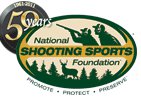 NEWTOWN, Conn. — The National Shooting Sports Foundation (NSSF), the trade association for America's firearms industry, today filed a lawsuit challenging the legal authority of the Bureau of Alcohol, Tobacco, Firearms and Explosives (ATF) under the Gun Control Act to compel 8,500 federally licensed firearms retailers in Arizona, California, New Mexico and Texas to report the sale of two or more rifles.
NEWTOWN, Conn. — The National Shooting Sports Foundation (NSSF), the trade association for America's firearms industry, today filed a lawsuit challenging the legal authority of the Bureau of Alcohol, Tobacco, Firearms and Explosives (ATF) under the Gun Control Act to compel 8,500 federally licensed firearms retailers in Arizona, California, New Mexico and Texas to report the sale of two or more rifles.
Specifically, the regulation calls for reporting multiple sales of any semi-automatic rifle larger than .22 caliber and capable of accepting a detachable magazine that are purchased following an FBI background check by the same individual within five consecutive business days.
NSSF's lawsuit, filed in the U.S. District Court for the District of Columbia, seeks an injunction to block ATF from implementing the reporting requirement. ATF has sent “demand letters” to firearms retailers in the four states to inform retailers they must begin reporting such sales by August 14.
NSSF Senior Vice President and General Counsel Lawrence G. Keane pointed out that if ATF can require this record-keeping and reporting requirement of law-abiding retailers in these four states simply by sending a letter demanding the information, then there is no record or report ATF cannot require of any licensee, anywhere in the country, for as long as ATF wants. “This is the proverbial ‘slippery slope,' and our industry is extremely concerned about it,” said Keane.
Keane added, “At the time Congress authorized the reporting of multiple sales of handguns, it could have required it for the sale of long guns, but it did not. Acting ATF Director Ken Melson himself has questioned ATF's legal authority to impose this new requirement.”
Despite its lawsuit, NSSF is encouraging all retailers, not just those along the Southwest border, to continue to cooperate with law enforcement and report any suspicious activity to the ATF. “The firearms industry and NSSF take pride in having a longstanding cooperative relationship with ATF,” said NSSF President and CEO Steve Sanetti. “Retailers have long been considered a vital source of information for law enforcement in combating illegal firearm trafficking.” Read more
Source: nssf.org
Recommended Tactical Rifle Resources:
 New! The Gun Digest Book of the AR-15 Vol. III
New! The Gun Digest Book of the AR-15 Vol. III
New! The Gun Digest Buyer's Guide to Tactical Rifles
The Gun Digest Book of the AR-15 Vol. I
The Gun Digest Book of the AR-15 Vol. II
Gunsmithing the AR-15, How to Maintain, Repair & Accessorize
Find more gun books, DVDs and downloads at gundigeststore.com.
The Uzi Is Back!
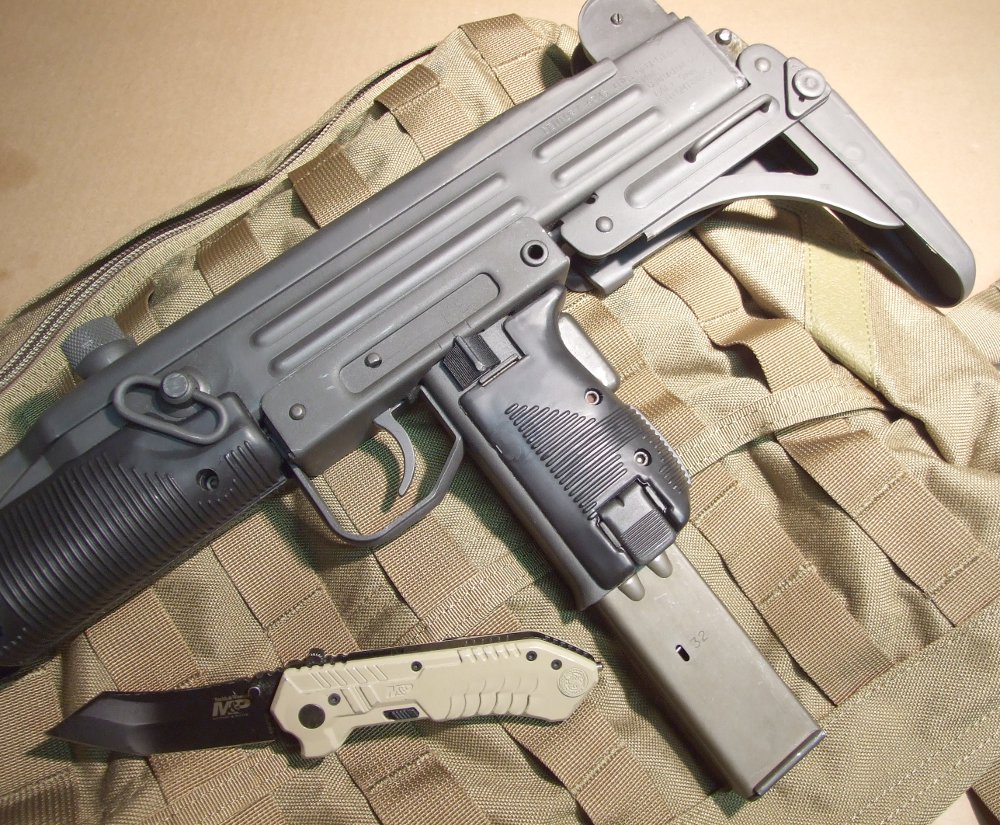
Century Arms offers up a civilian-legal classic of the iconic Uzi that still holds promise.
The 9mm UZI Submachine Gun was the “IT” gun of the 1980s and into the 1990s. Its popularity and iconic status exploded immediately following the assassination attempt on President Ronald Reagan on March 21, 1981.
It was then a photograph showed a U.S. Secret Service Agent with his UZI subgun drawn and held at, shall we call it, a “Hollywood High Ready” position. The muzzle was up by his head. It was a very dynamic photo shot at a moment of national crisis. Until that time most of us didn’t realize that the Secret Service had this weapon in inventory. It became the dream weapon of nearly every cop I knew, rivaling the cool factor of Dirty Harry’s .44 Magnum.
I had my first encounter with one, the real full-auto deal at just about the same time. I was an auxiliary deputy, just starting out with a central Ohio sheriff’s office. I had just come in to work one of my first paid special duty details (for a whopping $11 per hour at the time) at an area drag strip during national competitions.
It had been a bad year weather wise at the track, races had been delayed and a tornado had passed near the campground area during the previous evening. Needless to say, the natives were restless. I arrived at the office to pick up my radio when the departments firearms instructor, a sergeant, asked me to help him load the department’s UZI.
“UZI? We have an UZI?!” Of course I jumped at the chance! But why were we loading the UZI? It was then I noticed another sergeant checking out the department 37mm gas launcher and gear. I hadn’t seen that little number before either. The firearms instructor told me that there were a bunch of outlaw bikers out at the track and there was a potential for trouble. And while outlaw bikers might not listen to a cop armed with a .38, they did understand UZI. Cool. I went out to the track, and had just arrived at my duty post when we got a call that all deputies were needed in the campground.
When I got there I saw the aforementioned sergeant stick a mag in the UZI, cock it, and hold it at the same position I saw the Secret Service Agent hold his in. He then walked up to the bikers who seemed to be in a rather foul mood. Seems that some drunken idiot drove his car past their bikes and tents and splattered them with mud.
When this aroused their ire, the surrounding crowd, which looked to be mostly average race fans, started chanting for the bikers to kill the car driver. We had to end up arresting the car driver because he didn’t want to leave. This was after the sergeant had secured his release from the angry bikers with the UZI. In the end as we left, we discovered that the crowd was mad because they lost out on their entertainment.
This caused them to throw dirt clods and bottles at us as we left with our “prize”! A most interesting experience, and I’m glad the UZI and the gas gun were there. I never saw the weapon after that. I should have gotten it for our drug raids when I was on the same agency’s drug unit a year after that. Even though I never saw it again, I was hooked on the UZI design.
A little historical background on the UZI carbine is in order:
The UZI is a related family of open-bolt, blowback-operated submachine guns. Smaller variants are considered to be machine pistols. The UZI was one of the first weapons to use a telescoping bolt design which allows for the magazine to be housed in the pistol grip for a shorter weapon, a design not seen since the Japanese Type II machine pistol.
The first UZI submachine gun was designed by Major Uziel Gal in the late 1940s. The prototype was finished in 1950; first introduced to IDF special forces in 1954, the weapon was placed into general issue two years later.
The UZI has found use as a personal defense weapon by rear-echelon troops, officers, artillery troops and tankers, as well as a frontline weapon by elite light infantry assault forces.The UZI has been exported to over 90 countries. Over its service lifetime, it has been manufactured by Israel Military Industries, FN Herstal, and other manufacturers. From the 1960s through the 1980s, UZI submachine guns were sold to more military and police markets than any other submachine gun ever made.
If you want all the intrinsic details on this weapon and its history you can find plenty at Wikipedia. In fact the picture at the Regan assassination attem I referred to can be found on the Wikipedia web page. The UZI design is good enough that it was kept in front line service by the Israeli Defense Service until 2003.
In order to satisfy the public fascination with the UZI semi-automatic versions of the subgun were produced for sale to civilians without the hassle of the federal tax stamp.
The action was changed to closed bolt and the barrel was lengthened to 19.8 inches to satisfy federal requirements. There was also an UZI Pistol and a Micro-UZI in .380. Unfortunately it seemed that I never had enough cash available to buy one.
Eventually, importation was stopped by administrative stroke of the pen by former President George H.W. Bush, which also temporarily choked off the supply of civilian legal semi-auto AK-47’s, at least for a few years. Well now, I have my chance again, because Century Arms International has introduced its own variant of the UZI semi-auto carbine for sale here, the UC9.
The UC-9 is made from an assortment of genuine UZI parts and assembled here in the U.S. It has the same 19.8 long barrel of the previously imported model, and like it, is semi-automatic only, having been converted to fire from a closed bolt from the original open bolt of the full auto capable original.
At 9 lbs., the UC-9 is no lightweight, but in return you get a mostly steel weapon that makes handling even the hottest 9mm rounds an effortless task-yet the gun is very compact at only 24 inches overall with the stock folded, and a mere 31.5 inches with the stock extended.
The UC-9 provides lot of close range firepower within that package and comes with (according to the online catalogue) with two 32 round all steel magazines. However the hard copy of the catalogue says it comes with 4 magazines-which my sample did.
For those of you who may not be familiar with the manual of arms for the semi-automatic carbine, it is rather straight forward. There is a safety/selector switch which is located above the vertical grip on the left side (the UZI is somewhat unique in that the magazines are loaded through the same vertical grip-and not ahead of it on the receiver).
There is also a grip safety a’ la the 1911 pistol (which must be depressed to cock the gun), and a cocking handle located on top of the receiver in a fashion similar to the 1928 Thompson Sub-machinegun.
The magazine latch/release is located at the base on the bottom left side of the grip, below the plastic grip panel. For ease of carry, there is a single point sling swivel directly above the horizontal foregrip. Sights are an rudimentary affair with rear the rear sight containing two apertures-one marked for 200 meters (a bit of a stretch) and another for a more reasonable 100 meters.
Just ahead of the rear sight assembly is a button for release of the top cover of the receiver and disassembly. There is no bolt hold open latch (since the design was originally open bolt) and, because this is a weapon that was designed in the late 1940’s there is no built in attachment points for vertical foregrips, lights, lasers, optical sights or any of the items we deem as essential for the operation of our 21st Century weapons systems.
But that certainly doesn’t mean the UC-9 is not a useful weapon to the contrary-is represents the ultimate in rugged and durable firepower for close range use. How many other semi-automatic weapons of any kind come with 4 magazines? That fact alone is also a plus.
Are there any drawbacks to the UC-9? Only one that I can see, and that is the trigger. When the open bolt design was converted to closed bolt, well, it didn’t totally convert it.
Yes, the bolt is closed when the gun fires, but the pull is long and feels like it still is an open bolt operation. There are massive parts that move at the moment of fire. Not the standard fare, but certainly it can be gotten used to and compensated for with practice. The UZI never was a match weapon, nor can it be expected to be. It was designed to deliver high volumes of close range firepower and it still does even in its semi-auto only guise.
So what is the UC-9 good for? Well it is great fun shooting a historic piece for one thing. Especially for me, since I have always wanted to fire one. But it is STILL a viable defensive piece.
The stock folds to a compact 24 inches, and quickly expands to full shoulder length in a split second. Its parkerized finish allows it to be stowed in a vehicle trunk (where legal) with 128 rounds at the ready, or in the back of a pickup truck or jeep/atv on a farm or ranch.
It would also be great for an RV, boat, or even as a survival weapon in private aircraft for rough country use. And it certainly can be kept ready to go for home defense. And while the UC-9 could be fired like a pistol with the stock folded, remember it’s gonna weigh at least another pound with a loaded magazine in place, take a moment and shoot it with the stock extended-it is a carbine after all!
So, all of this is an academic exercise until I actually got a chance to fire the UC-9, an experience I captured on the accompanying video. I didn’t know what to expect exactly other than a very low level of recoil and the reliable functioning of the UZI design when made with UZI parts. I was not disappointed.
I tested the carbine during a rare break in the miserable Ohio weather we were having at a distance of about 30 feet taking the carbine literally straight from the box.
I firmly believe in testing weapons this way. For me, if I have to clean lube and reassemble a gun in order to make sure it goes bang reliability before I can shoot it-well, I don’t want it. Although this is standard practice for a lot of writers and certainly for a lot of meticulous shooters, I think the average shooter is going to do just what I do, and have always done-open the box, take the gun out, make sure that there is nothing plugging the bore, read the directions (or maybe not) load it and shoot it.
For some folks they may purchase a defensive weapon like a pistol and just load it and leave it without test firing it and expect it to work if they need it in an emergency. Yeah, I know, we definitely aren’t supposed to do that, but the majority of new shooters aren’t blessed with a backyard range to testfire any gun that comes along, so that’s what happens in real life more than we might expect. And that is how I ran the testfire for the video.
I had previously handled the gun to get a little familiar with it and its operational system, and as you can see by watching the video, I wasn’t quite familiar enough. Not being used to a grip safety that needs to be depressed to operate the bolt (a’la the Springfield Armory XD Pistols) caused me a couple of issues in clearing and checking the chamber, until I remembered the safety.
I loaded one of the magazines with Winchester white box 115 gr. Ball ammo and made ready. In my preparatory work with the UC-9’s heavy trigger (which after all is a conversion from an open bolt firing system to a closed bolt system), I didn’t know how much I would like this gun, or how it would fulfill what I see as its proper role and mission.
I can tell you that shooting the UC-9 had to be the most pleasant firearm surprise in my life. I rolled back the trigger until the gun went “bang.”
When I did fire the gun, I was immediately surprised to find that the trigger somehow seemed smoother. This was probably because, and this is just a guess as I am definitely not an engineer, that the firing pin had something to strike rather than just open air to punch into like it did while dry firing.
Anyway, this and the anticipated lack of recoil caused me to immediately break into a big grin accompanied by the thought “oh this is so cool”. I was firing from a standing position. After firing the first 3 shots into the center of a standard OPOTC qualification silhouette, I re-adjusted my point of aim.
I ran off the rest of the magazine into the head area, which struck just slightly low for a 5 inch or so group. Now DON’T take this as any sort of indication of the UC-9’s accuracy potential as I was grinning, looking at the target with each of the shots, and thinking about how much fun the UC-9 is!!! I wasn’t exactly in the precision sniper mode. In fact, I hadn’t been this excited by a gun test in a long time.
There was not a bobble or hitch with the UC-9 during the testfire. After I finished the first mag, I asked my sister in law Mandy if she had ever shot a gun before, and she hadn’t. I asked if she wanted to try a few rounds, assuring her it was a lot of fun and that there was no recoil. She said “yes” with just a little bit of hesitation.
I loaded up for her again, instructed her in the basics of shooting and let her have it-instructing her to aim for the center of the silhouette, where I had placed my first few rounds. Her first few shots were in the chin area. Soon she got the hang of the sights, and dumped the rest of the round into the center of the silhouette, all with the same big grin that I had!
Boys and girls, you have got to get one of these! Not only are you shooting a piece of history, but you are shooting weapon of reasonable close range power which, because of its zero recoil and 9mm pistol cartridge, is just plain fun-without all the blast of 5.56mm and larger cartridges.
This is especially important if you are limited to firing your guns at indoor ranges-it saves a lot of wear and tear on you. Finally, this piece of history is still battle capable.
Time to expand your horizons folks! 20 years ago the UZI carbine was THE gun to have. It disappeared due to some ill-advised and unconstitutional presidential executive orders which banned its import-but its back, and its built here in the U.S. My hat is off to the folks at Century Arms!
Thanks for bringing back a classic that I have always wanted to shoot, but never had a chance to-until now. And at a price in the $800 range, the UC-9 is impossible to beat. Now, I’m going to get some more ammo, and keep shooting.
Century Arms
800-527-1252
centuryarms.com
This article appeared in the July 18, 2011 issue of Gun Digest the Magazine.
Man With Gun Thwarts Gang Invasion of His Home
Ronald Bracey managed to smile Wednesday even though deputies patrolled around his home. Plastic wrap covered a bullet hole in his front window. His wife’s frightened face reminded the 69-year-old of the terror that took place at his home on Tuesday morning.
Four men are accused of holding Jackie Bracey at gunpoint. But Ronald Bracey didn’t hesitate to protect his wife.
He grabbed his gun, firing eight rounds at the intruders – hitting one in the shoulder – and chased them off. Three of the men were caught and arrested.
“I would have done the same thing,” said John Denton, who lives on the same street at Bracey and has a black and yellow sticker with a gun that read “protected by the 2nd Amendment” on his front door.
“It’s very important to have a gun, especially living out here,” he said. “There’s no time to rely on 911 when you’re in the middle of an emergency.” Read more
Source: naplesnews.com
Recommended Glock Resources:
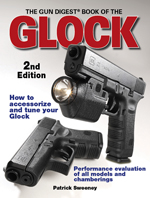 The Gun Digest Book of the Glock, 2nd Edition
The Gun Digest Book of the Glock, 2nd EditionNew Jersey Range Celebrates 100th Anniversary
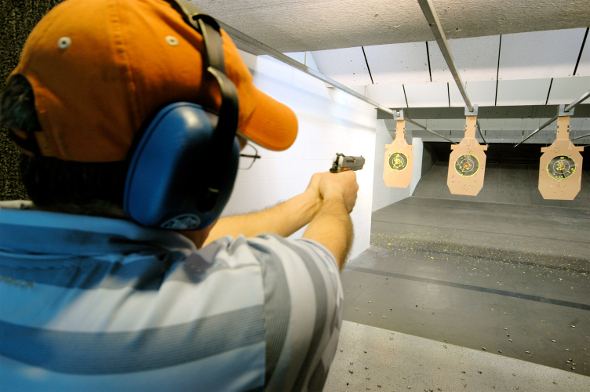
Last month, the Franklin Revolver and Rifle Association, located in Franklin, New Jersey, celebrated 100 years in operation.
As the New Jersey Herald reported, “The facility is one of the last open-air gun ranges remaining in New Jersey and is the home to National Shooting Champions and law enforcement competition teams. The community-based club offers free shooting lessons to women who have never handled a gun before as well as instructors and coaches for Boy Scouts seeking their merit badges for marksmanship.
In recent years, the club has opened its doors to students from High Point Regional High School studying forensic science.”
According to the club’s official history, “around 1911, a group known as ‘The Boro Boys’ constructed a shooting range between Route 23 and Franklin Pond, behind what is now a strip mall. The range was nothing elaborate but sufficient for practice and occasional matches.” In 1929, the group moved operations to its current location, in what was at the time a limestone quarry.
“Around 1937, the original clubhouse was constructed and the group reorganized as the ‘Franklin Revolver & Rifle Association.’ Regular shooting positions were constructed and target matches were held. Local sheriff's officers and peace officers used the range for training purposes. Local groups held clambakes at the range.”
Today, the club boasts 170 members.
“We are open to anyone who wants to learn how to shoot the right way,” said John Heller, a Franklin member for the last 56 years. “The club has some great people here who are very safe and experienced marksmen.”
Source: New Jersey Herald 7/10/11
Operation Fast & Furious Designed to Support Gun Control
Through Senator Grassley's office, Fox has obtained a number of internal ATF emails that seem to suggest that ATF agents were counseled to highlight a link between criminals and certain semi-automatic weapons in order to bolster a case for a rule like the one the DOJ announced yesterday [Monday]. – Fox News
Townhall has obtained the email which states “Can you see if these guns were all purchased from the same FfL and at one time. We are looking at anecdotal cases to support a demand letter on long gun multiple sales. Thanks Mark R. Chait Assistant Director Field Operations.”
Deputy Attorney General James Cole of the Department of Justice issued a statement about the newly approved rules:
“The international expansion and increased violence of transnational criminal networks pose a significant threat to the United States. Federal, state and foreign law enforcement agencies have determined that certain types of semi-automatic rifles – greater than .22 caliber and with the ability to accept a detachable magazine – are highly sought after by dangerous drug trafficking organizations and frequently recovered at violent crime scenes near the Southwest Border. This new reporting measure — tailored to focus only on multiple sales of these types of rifles to the same person within a five-day period — will improve the ability of the Bureau of Alcohol, Tobacco, Firearms and Explosives to detect and disrupt the illegal weapons trafficking networks responsible for diverting firearms from lawful commerce to criminals and criminal organizations. These targeted information requests will occur in Arizona, California, New Mexico, and Texas to help confront the problem of illegal gun trafficking into Mexico and along the Southwest Border.”
Operation Fast and Furious is looking more and more like a set up from the beginning to push Obama and Holder's radical anti-Second Amendment agenda as they used law abiding gun shop owners to enable government officals to break the law.
They then blamed the very same gun shops for illegal gun trafficking, despite those shops being forced by ATF to help ATF agents carry out Operation Fast and Furious. Now, those shops are being punished through new Justice Department gun control measures. Read more
Source: townhall.com
The First Colt Clone
Most people don’t know about the Great Western Arms Co., which made the first Colt SAA clone. Even reference books can’t get it straight! But for a while, the Great Western was the idol of the American handgun scene.
Heads up, trivia buffs. Here’s a poser: In John Wayne’s last movie, The Shootist, 1976, what make and model of six-gun did he use?
Are you kidding? Everybody knows The Duke used a first-generation Colt Single-Action Army. True, he usually did. But in his final movie, Big John used a Great Western Frontier Model in .45 Colt.
Odd as it might seem today, for a brief time in the mid-1950s, revolvers made by the Great Western Arms Co. of Los Angeles, Calif., were the beau ideal of the American handgun scene. At that time, Colt’s SAA was out of production, Ruger’s Vaquero wasn’t even a twinkle in Bill Ruger’s eye, and the Italian houses of Uberti and Pietta hadn’t been founded. If you wanted an authentic, brand-new single-action .45, you wanted a Great Western.
Decline of the SAA
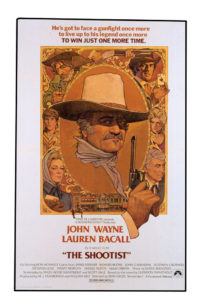
Today, most people don’t know Great Western, the first Colt SAA clone, existed. No wonder, because even reference books can’t get it straight. One says Great Western’s guns were imported from Germany. Wrong. Another says they were imported from Italy. Wrong. Another says the company was headquartered in Venice, Calif. Wrong. To be fair, Great Western’s brief manufacturing life span — eight years — didn’t afford much opportunity for extended scholarship. But there’s a story there nonetheless. As everyone knows, all modern solid-frame, single-action .45s have their roots in the classic Colt Model 1873 Single Action Army (that is, the Colt Model P). With its one-piece frame, hand-fitting grip, side-mounted ejector rod and characteristic “click-click-click-click,” the Colt SAA defined an era of American history. A list of shootists who favored the SAA or its civilian counterpart, the Peacemaker, reads like a who’s who of the wild West: Emmett Dalton, Wyatt Earp, Pat Garrett, John Wesley Hardin, Teddy Roosevelt, Doc Holliday, Belle Starr, Bat Masterson, Bill Tilghman, Tom Threepersons and Elmer Keith. (Doc O’Meara presents a wonderfully readable overview of the SAA and those who preferred it in his books Guns of the Gunfighters and Colt’s Single Action Army Revolver, published by Krause Publications.)
By the end of World War I, however, the single-action .45 was on its way out. The semiauto and double-action revolver were clearly the wave of the future, and they conspired not to praise the old SAA but to bury it. From a peak of 18,000 units in 1903, SAA production dwindled to just 800-plus units in 1940, its final year. At the time, the Colt SAA was the only full-sized, fixed-sight, single-action revolver made in the United States. A relic of bygone days, it was as anachronistic in mid-20th century America as the Pony Express. Immediately after WW II, Colt discontinued the old trooper with no thought of bringing it back.
The New Old West
In the late 1940s, however, a strange thing happened: America entered a twilight zone of old-West nostalgia. Ghost Riders in the Sky by Vaughn Monroe topped the jukebox charts in 1949. Popular radio dramas included Tales of the Texas Rangers and Frontier Town. Two of the top 10 television programs of 1950 were westerns: The Lone Ranger, starring Clayton Moore, and Hopalong Cassidy with William C. Boyd. The next year, Gary Cooper won an Oscar for his portrayal of Peacekeeper-toting Sheriff Will Kane in High Noon, and the movie’s folksy theme song, Do Not Forsake Me, Oh My Darling, went top 40.
Don’t ask me how it got started. Perhaps it was a subconscious longing for a simpler, preatomic age. Regardless, thousands of middle-aged suburban men who wouldn’t know which end of a horse the feedbag goes on suddenly started wearing bolo ties and rattlesnake boots and saying “howdy.” Dude ranches sprang up across the Southwest. Everybody, it seemed, wanted to be a cowboy — or at least pretend to be one.
That popular longing for the good old days of the wild West eventually made an impression on William B. Ruger. With his keen ability for identifying trends, Ruger realized he stood at the brink of a vast new market. Investing the proceeds of his popular .22 semiauto pistol into new design and tooling, in 1953 he introduced his Single Six .22 single-action. With its 19th-century styling, the Single Six was a smash hit and proved there was a market for the single-action revolver. But as nice as the gun was — and is — it had two shortcomings: It was “just a .22,” and it wasn’t a “real Colt.”
There apparently wouldn’t be a “real Colt” any time soon. At the time, Colt Firearms Co. was sitting fat and happy with a bushel of Korean War government contracts and saw no need to resume production of an 80-year-old design. Meanwhile, prices for used SAAs, Peacemakers and Bisleys — even doggy ones — shot through the roof.
 But nature abhors a vacuum, and so did William R. Wilson, a California gun enthusiast with a strong entrepreneurial sense. There was a demand, and he would fill it. According to Bob Deubell — whose Web site, www.greatwesternfirearms.com, is a treasure trove of information — Wilson approached Colt in 1953 and asked if it planned to resurrect the SAA. Colt said the SAA was done.
But nature abhors a vacuum, and so did William R. Wilson, a California gun enthusiast with a strong entrepreneurial sense. There was a demand, and he would fill it. According to Bob Deubell — whose Web site, www.greatwesternfirearms.com, is a treasure trove of information — Wilson approached Colt in 1953 and asked if it planned to resurrect the SAA. Colt said the SAA was done.
Great Western Rises
A man on a mission, Wilson returned to Los Angeles, where he wasted no time enlisting partners and tooling up a factory on Miner Street, starting the Great Western Arms Co. Inc. to produce copies of the classic Colt SAA. Wilson was the new company’s president, and its first product was the Great Western Standard Model. Guns started rolling off the line in May 1954 and incorporated some genuine SAA components Wilson had procured from Colt.
Wilson subsequently enlisted Hy Hunter of Hollywood to handle marketing and distribution. A prominent gun retailer and firearms importer, Hunter merged the Great Western line into his existing retail and mail-order distribution channels, which were crammed with numerous Belgian, German and Italian guns. The persistent rumors that Great Western’s guns were manufactured abroad probably originated with the company’s association with Hunter. By about 1960, Hunter’s line included a West German SAA knockoff that looked pretty much like the Great Western, so perhaps you might be excused for assuming that the Great Western line was imported.
It wasn’t. All Great Western Arms Co. guns were manufactured in Los Angeles.
Except for some minor dimensional differences, the Great Western Standard Model, later called the Frontier Model, was the spirit and image of the Colt SAA in all major respects except one: its hammer. The Colt had a hammer-mounted firing pin, but the Great Western’s firing pin was mounted on the frame. The design originated with Idaho gunsmith Herb Bradley in the 1930s and was subsequently refined by Christy Gun Works of Sacramento, Calif. According to Deubell, the first several hundred Great Western Frontiers used a genuine Colt SAA hammer with integral firing pin. After 1955, a Colt-style hammer was available as an option for an additional $8.
 Great Western Product Line
Great Western Product Line
The flagship of the Great Western line, the Standard Model, was a fixed-sight SAA copy available in 43/4- , 51/2- and 71/2-inch barrels. Chamberings were advertised as .22 Long Rifle, .22 WMR, .38 Special, .44 Special, .357 Magnum, .38-40, .44-40, .44 Magnum, .45 ACP, .45 Colt, and “.357 Atomic.” The Atomic was a nonfactory .357 Magnum load incorporating standard brass, 16 grains of Hercules 2400 and a 158-grain bullet. Some claimed the .357 Atomic churned up 1,600 feet per second at the muzzle, which would have made it a real scorcher for its day. (For today, too.) Apparently, 50 or so Great Westerns were chambered for .22 Hornet, which was something unique: the first factory revolver to be chambered for a high-velocity varmint cartridge. According to Keith, some Standard Models were also chambered in .30 Carbine, another first, if true.
Some of those chamberings probably existed only in Great Western catalogs, as no production examples have been identified. As was true with many small gunmakers, there was apparently a reality gap between what Great Western’s catalog stated and what it built. No company production records remain, but Deubell, with whom Great Western is something of a passion, estimated that 50 percent of the company’s production was chambered for .22 rimfire.
A Buntline version with a 12- or 121/2-inch barrel was offered, as was a 31/2-inch-barreled Sheriff’s model that lacked an ejector rod assembly. A target version, the Deputy, featured a 4-inch barrel, a target front sight, an adjustable rear sight, and a full-length rib similar to the old King target rib popular in the ’30s and ’40s. A Fast Draw model with tuned action, brass grip frame and short front sight completed the revolver lineup.
Great Western also manufactured about 20,000 clones of the Remington Model III double derringer chambered in .38 S&W and .38 Special. The indefatigable Hunter simultaneously imported a West German double derringer that looked much like the Great Western, which further reinforced the impression that Great Western guns were shoddy postwar imports.
 Actually, Great Western guns were built to take some punishment. The Standard or Frontier Model, for example, used the finest materials. The frame was forged steel. The hammer was made from 6150 chrome-vanadium steel. The hand, trigger and cylinder bolt were made of beryllium copper, and cylinders in calibers .357 and larger were made of 4140 chrome moly steel. That’s a lot of beef.
Actually, Great Western guns were built to take some punishment. The Standard or Frontier Model, for example, used the finest materials. The frame was forged steel. The hammer was made from 6150 chrome-vanadium steel. The hand, trigger and cylinder bolt were made of beryllium copper, and cylinders in calibers .357 and larger were made of 4140 chrome moly steel. That’s a lot of beef.
Finishes? Name it. You could have a Great Western in plain white metal; blued steel with case hardening; or Parkerizing, nickel plating, silver plating or gold plating, with or without engraving. If the faux-stag “Pointer Pup” grips didn’t thrill you, maybe ivory or mother-of-pearl would. For a buyer who wanted to save $20, Great Westerns were available in kit form — in white — for all calibers except .44 Magnum. Henry M. Stebbins said in Pistols: A Modern Encyclopedia, published by Stackpole in 1961, that the kits weren’t aimed at average shlubs.
“(These kits) aren’t for amateurs,” he wrote. “The machine operations are done, and instructions come with the kit, but the deburring, fitting, polishing and finishing are for the buyer to do or to have done. This calls for gunsmithing skill.” Kit guns were marked with a “0” serial prefix.
Fans and Detractors
Great Western peaked during its first few years. In a masterpiece of marketing straight from the pages of Col. Sam Colt, Wilson presented President Dwight Eisenhower with a beautiful Great Western. Wayne was given a pair of engraved, gold-trimmed, ivory-stocked Frontier Models. (He carried those in The Shootist.) California Gov. Goodwin J. Knight was given an inscribed presentation revolver, a gun now in Deubell’s collection.
Dee Woolem, a stuntman at Knott’s Berry Farm in California, went to bat for Great Western after perfecting a quick-draw technique that earned him the title of “father of fast-draw.” Woolem traveled the country, promoting himself and his new gun. Those celebrity tie-ins provided a promising start for Great Western, but all was not well.
It is not recorded that Wilson had a detailed understanding of the labor-intensive nature of firearms production. His company obviously lacked Colt’s 120-plus years of handgun-building experience. There is no question that Great Western used the finest materials, but its regular production guns were too often characterized by abysmal fit and finish. Word about that soon spread, aided by Keith, America’s most prominent handgunner.
In one of the most damning firearms reviews ever printed, Keith hammered Great Western in his popular 1955 book Sixguns, published by Bonanza Books.
“The (Great Western) gun we tested was very poorly timed, fitted, and showed a total lack of inspection,” he wrote. “The hand was a trifle short, the bolt spring did not have enough bend to lock the bolt with any certainty, the main spring was twice as strong as necessary and the trigger pull about three times as heavy as needed. … As received, it certainly was neither safe, nor in shape to have been put on the market.
“There is no earthly reason why this new single action could not be just as good as the famous old Colt, but it will have to have a lot of redesign work to ever make it superior. … I cannot recommend them as finished arms.”
Keith’s blistering review constituted Strike One for Great Western.
Strike Two was Ruger’s introduction of its Blackhawk single-action in 1955. The magnificent revolver had an indisputable “cowboy” look despite its adjustable rear sight and tall ramp front sight. Unlike the old Colt and Great Western, it was a “modern” single-action that featured coil, not flat, springs and an investment-cast frame that shaved cost without sacrificing strength. And, wonder of wonders, the Ruger Blackhawk retailed for about $87.50, which was $4 less than the Great Western Frontier at $91.50.
Strike Three was Colt’s crushing 1956 announcement that, on second thought, it would bring back the SAA. Faced with a creeping tide of red ink because of the cancellation of its Korean War contracts, Colt reversed its earlier decision, called the old SAA in from the bench and marketed it energetically. The high-quality Colt was everything the Great Western was — and everything it wasn’t, too. The new second-generation Colt retailed at $125, or 37 percent higher than Great Western’s comparable model. Price, however, was no object: Colt’s renowned quality and the genuine romance of the magic Colt name easily trumped the contrived romance of the Great Western.
Ruger and Colt splashed their new sixguns throughout the firearms media, advertising in prestige publications such as American Rifleman, where their full-page ads appeared regularly. The inevitable effect was that Great Western got lost in the noise generated by Ruger and Colt.
Too Little, Too Late?
That was too bad. Most authorities agree that by about 1960, Great Western had a handle on its quality problems. Wilson had hired Dwayne Kastrup, a leading Colt SAA technician, as Great Western’s chief gunsmith. Kastrup’s influence was immediate and profound. In the second edition of Sixguns (1961), Keith sounded a conciliatory, admiring note.
“When we started this book, we could not recommend the Great Western Single Action,” he wrote. “Since then, we are happy to report Great Western has really gotten on the ball and is now cooking on all four burners. All the late manufacture Great Western single actions we have seen and tested are excellent arms: accurate, properly timed and adjusted and for the most part have good trigger pulls.”
Then came the stunner: “The Great Western Arms Company of California is now turning out better finished and fitted single actions than any we have seen from Colt,” Keith wrote.
It was quite a reversal of his earlier opinion. Stebbins was also sympathetic in his 1961 book.
“The Great Western Arms Company is ambitious and progressive,” he wrote. “It’s perfectly possible that they will build a single-action that’s of better quality than present or past Colts, as well as of more durable modern design. Some would even say, without qualification, that they now make the best.”
But the accolades were too little, perhaps, and certainly too late to help Great Western. Few firearms companies had fallen so far so quickly. By 1959, Great Western’s production of finished guns had become sporadic. Gun Digest stopped recognizing Great Western after its 1959 edition, and as far as I can tell, editor John Amber never gave it another thought.
In 1959, the assets of the moribund Great Western Arms Co. were purchased by gun importer E&M Co. (Early & Modern Firearms, now EMF). E&M attempted to carry on the Great Western name, promoting whatever finished goods remained in stock and heavily pushing the Great Western kits. A sales organization, Great Western Arms Sales Co., was established in North Hollywood, Calif. The company continued to promote Great Western products. However, by mid-1964, Great Western’s advertising was of a quality usually reserved for do-it-yourself earthworm farms.
Then, poof. Great Western winked out, going gentle into that good night.
What Remains
Because no production records remain, it’s difficult to construct a manufacturing chronology of Great Western’s final years. It seems likely that when E&M acquired Great Western, it marketed completed guns and then assembled what finished guns they could from parts. After that, kits and spare parts would have been all that remained. Such a scenario would explain the inconsistent nature of much of Great Western’s late production.
Today, EMF is a leading importer of single-action revolvers and other cowboy-action guns. Forty years after the demise of the original Great Western Arms Co., EMF still retains Great Western as a registered brand name. In a karmic gesture, EMF announced a new “Great Western II” single-action revolver line at the 2004 SHOT Show. The Great Western II is made in Italy by Pietta, and it continues that company’s reputation for outstanding quality and value.
It’s ironic: For 50 years, some people mistakenly said Great Westerns were made in Europe. Now they’re right!
EMF estimated that 50,000 total Great Western revolvers were made, including kit guns. That’s not a bad record, considering the company only manufactured guns for about eight years. That also means Great Westerns are scarce enough to excite collector interest.
Referring to the obsolete .225 Winchester cartridge, Frank C. Barnes once wrote in Cartridges of the World, “It might be well to hang on to your (.225 rifle) because not a great many were sold, and eventually some gun writer will rediscover it as the greatest .22 varmint cartridge conceived by the mind of man, and at that point all your shooting friends will wish they had one, too.”
A similar situation exists with Great Western revolvers. Once considered the pariah of single-actions, they’re now quite collectible.
That derives partly from Great Western’s status as the first Colt clone, partly from the relative scarcity of their guns, and partly from the high quality of most later examples. The bane of any small manufacturer is inconsistency, however, and the quality of existing Great Westerns is across the map.
My Great Western Frontier .38 Special is a good example. Bearing serial No. 17882, it is midproduction gun, probably from 1957 or 1958. Almost 50 years old and showing signs of heavy use, it is still tighter than many brand-new Colt clones. The click-click-click-click of its action is still crisp and positive. Fore- and-aft cylinder play is almost nonexistent, and its indexing is flawless. So what’s to criticize?
Its finish, that’s what. Although the gun has obviously been ridden hard and put away wet, enough of the original finish remains to make a judgment call. It actually has fingerprints in the cyanide-dip case-hardening on the frame, something I would not have thought possible. I don’t mean faint fingerprints, either. I mean permanent, indelible fingerprints sharp enough to scan into an FBI database.
The back of the hammer shows obvious tool marks. The cylinder base pin latch has burrs on it. Even looking past the holster wear, it’s obvious the revolver is not a jewel in the crown of Great Western. This has no effect on the gun’s shooting qualities — it’s as accurate as any single-action I’ve fired — but it makes me wish the company had spent a bit more time on fit and finish.
Get Fast Access with ATI 9G Biometric Safe

American Tactical Imports has introduced the ATI 9G INPRINT Biometric Safe.
The INPRINT biometric security device was first introduced in 2002 with one goal—to “provide a family of products that offer secured instant access through the use of your finger.” Now, with advancements in size, color, construction and interface, INPRINT continues to raise the bar in the industry.
The INPRINT product family, through improved technology, uses the individualized security of your own fingerprint for granting access to your safe. Its active reader swipes with one finger operation and opens almost instantly while plugged in, or in two seconds with a 9-volt battery that lasts all year. The INPRINT has a remarkably low false acceptance rate of only 1 in 100,000 as compared with the competition’s rate of 1 in 5,000. The INPRINT was designed, engineered and is built in the USA.
To learn more, visit www.americantactical.us, call 800-290-0065 or contact your local gun shop.
Recommended Handgun Resources
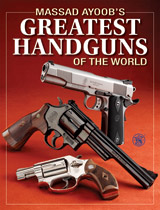 Massad Ayoob's Greatest Handguns of the World
Massad Ayoob's Greatest Handguns of the World
Gene Autry National Center to Display The Colt Revolver in the American West

Over 100 of the finest examples of the Colt revolver in the country go on display Grand reopening of Greg Martin Gallery on July 23, 2011, in conjunction with Day of the Cowboy and Cowgirl at the Autry. The exhibition will be ongoing.
Los Angeles, CA (May 25, 2011) — The Autry National Center announces the grand reopening of the Greg Martin Colt Gallery on July 23, 2011, featuring The Colt Revolver in the American West, an exhibition that explores the history of Samuel Colt’s revolutionary revolver in the American West. The opening also coincides with the celebration of Day of the Cowboy and Cowgirl at the Autry.
“I am pleased to showcase the Autry’s spectacular collection of Colt firearms in a manner that provides a narrative for the scope and monumental impact of guns in the American West,” said Daniel Finley, Autry President and CEO. “In this ongoing installation, we hope visitors are fascinated by the history and importance of an object that brought violence as well as peace to an entire region.”

Drawn solely from the Autry’s renowned collection, the exhibition provides an interesting look at one of the most popular and visible symbols of the American West and looks at the impact the Colt revolver had on the American frontier and the contemporary West.
The firearms include pieces of historical significance, opulently engraved specimens, and extremely rare models. A significant number of art and other artifacts, ranging from letters to fine china, will also be on display. A special section will be devoted to the Colt Single Action Army Model Revolver, “the handgun that won the West.”
“Simply put, the Single Action Army is the most successful and recognizable revolver of all time,” said Jeffrey Richardson, Associate Curator of Western History and Popular Culture, “and it is forever identified with the history and settlement of the American West.”
The exhibition begins with a history of the revolver and the difficulty gunsmiths and inventors had making an efficient revolving firearm capable of firing more than one shot without having to be reloaded. In 1831, sixteen-year-old Samuel Colt ultimately came up with a design that would transform the firearm industry and the American West.
Samuel Colt’s attempts to mass-produce his revolver and the ultimate keys to his success are the focus of the second part of the gallery. The next section of the exhibition is devoted to the Colt Single Action Army Model Revolver. The Single Action Army was popular with Western pioneers, miners, peace officers, gunslingers, outlaws, and cowboys. The use of the revolver by Western entertainers solidified its status as a veritable symbol of the region. The exhibition culminates with a look at the Colt revolver in the modern West, as it continued to be the weapon of choice for Western law enforcement officers, hunters, and target shooters throughout the twentieth century.
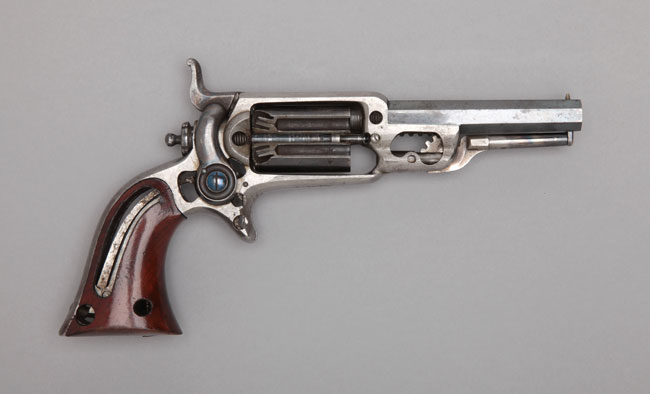
Highlights include:
- The first Single Action Army ever made, an original Buntline Special, and the only Single Action Army ever manufactured in .44 magnum caliber
- The revolver Doc Holliday used at the Gunfight at the O.K. Corral
- An entertainers’ section, featuring guns belonging to such Western actors as Tom Mix, Buck Jones, Ken Maynard, Gene Autry, Clayton Moore, and Leo Carrillo
- Presentation revolvers made by the Colt Company for five presidents, including the gun that was being made for President John F. Kennedy at the time of his assassination
- An opulently engraved pair of revolvers with Western iconography, and gold-inlaid images from the works of noted Western artists such as George Caleb Bingham, Albert Bierstadt, and Frank E. Schoonover
- The first modern revolvers designed by Tiffany & Co.
All objects in the exhibition are from the permanent collection of the Autry, which houses one of the finest Colt revolver collections in the country. Many of the artifacts were generously donated to the museum by Autry members and supporters, and some were featured in the widely successful traveling exhibition Pistols: Dazzling Firearms.
About the Autry National Center

The Autry National Center, formed in 2003 by the merger of the Autry Museum of Western Heritage with the Southwest Museum of the American Indian and the Women of the West Museum, is an intercultural history center dedicated to exploring and sharing the stories, experiences, and perceptions of the diverse peoples of the American West. Located in Griffith Park, the Autry’s collection of over 500,000 pieces of art and artifacts, which includes the collection of the Southwest Museum of the American Indian, is one of the largest and most significant in the United States. The Autry Institute includes two research libraries: the Braun Research Library and the Autry Library. Exhibitions, public programs, K–12 educational services, and publications are designed to examine the contemporary human condition through the lens of the historical Western experience and explore critical issues in society.
Weekday hours of operation for the Autry National Center’s museum at its Griffith Park location are Tuesday through Friday, 10:00 a.m. to 4:00 p.m. The Autry Store’s weekday hours are Tuesday through Friday, 10:00 a.m. to 4:30 p.m., and the Autry Cafe is open Tuesday through Sunday, 9:00 a.m. to 4:30 p.m. Saturday and Sunday hours for the museum and the store are 11:00 a.m. to 5:00 p.m. The museum, the store, and the cafe are closed on Mondays. The libraries are open to researchers by appointment.
Museum admission is $10 for adults, $6 for students and seniors 60+, $4 for children ages 3–12, and free for Autry members, veterans, and children age 2 and under. Admission is free on the second Tuesday of every month.
Wisconsin: Open Carry Advocates File Suit Against Madison Police

Five men who wore holstered firearms at a Madison restaurant last fall filed suit in federal court Tuesday, alleging police violated their constitutional right against unlawful searches and seizure.
The suit, the second filed in federal court in response to the incident, seeks to end a Madison police department policy of citing individuals who openly carry firearms with disorderly conduct after someone complains.
On Sept. 18 police responded to a Culver's restaurant near East Towne Mall and found five men openly carrying firearms at outdoor tables. Shawn Winrich and Frank Hannan Rock refused to identify themselves and were handcuffed, searched and arrested. Steve Jensen, Paul Fisher and Matthew Lutz gave their names to officers and were released after a background check.
Initially, Winrich and Rock were cited for obstructing police when they refused to identify themselves to officers. But those citations were rescinded and all five were later given tickets for disorderly conduct. The city eventually dropped those citations, too.
The suit alleges that detaining the men without reasonable suspicion that they had a committed or were about to commit a crime violated their Fourth Amendment right against unreasonable searches and seizures. Read more
Source: host.madison.com
 New! Gun Digest Buyer's Guide to Concealed Carry Pistols
New! Gun Digest Buyer's Guide to Concealed Carry Pistols
The Gun Digest Book of Concealed Carry
The Gun Digest Book of Combat Handgunnery
Effective Handgun Defense, A Comprehensive Guide to Concealed Carry
Find more resources at gundigeststore.com/tactical
Arizona, A Mecca For Gun Makers
 No big surprise that Arizona is a gun friendly state. After all, it made the Colt Single Action Army revolver the state firearm just this year. It turns out the Grand Canyon State is just as welcoming a place for gun makers.
No big surprise that Arizona is a gun friendly state. After all, it made the Colt Single Action Army revolver the state firearm just this year. It turns out the Grand Canyon State is just as welcoming a place for gun makers.
As the Arizona Republic recently reported, “More than 100 manufacturers of firearms and components [are located] in Arizona…Those manufacturers generate hundreds of millions of dollars in annual sales. The state has mainstream manufacturers such as Sturm, Ruger & Co., which operates a pistol manufacturing facility in Prescott. It also is home to boutique companies, such as Patriot Ordnance Factory, a Glendale semiautomatic rifle maker, and Coharie Arms Inc., which assembles clones of MP5 semiautomatic rifles in Mesa.”
All told, these businesses provide over 1,000 jobs in the state. “It's a great state for firearms,” said Kelly McMillan, president of McMillan Fiberglass Stocks and an officer in the related McMillan Firearms Manufacturing. “The politics are pro-firearms, and the weather is as good as it gets for making fiberglass gun stocks.”
Phoenix-based Robar Companies Inc. builds and customizes rifles used by SWAT teams. Robar founder Robbie Barrkman said the pro-shooting culture is a big draw for manufacturers.
“There is a big shooting public in Arizona,” he said. “There are lots of gun owners and lots of places were they can shoot.”
Source: Arizona Republic 7/15/11
Gun Digest the Magazine, August 15, 2011
Gun Digest is the source for firearms news, pricing and guns for sale. Readers benefit from in-depth editorial expert advice, show reviews and practical how-to instructions. With your Subscription, you’ll also learn about threats to your Second Amendment rights. Click here to begin your subscription to Gun Digest.
- Remington Model 700
- Bolt Maintenance Tips
- GSG 1911-.22
- Roy Weatherby's Magnums
- Gunsmithing: Stoning the Sear
- Gun shows, auctions, classifieds and more!
Not a subscriber? Make sure you don’t miss another issue! Subscribe now
ATF Florida Gun Probe Earns Congressional Scrutiny in Wake of ‘Fast and Furious’

Several lawmakers are questioning the Obama administration about whether the controversial “Fast and Furious” gunrunning probe may have had a cousin in Florida that resulted in guns being trafficked to Central America.
Rep. Gus Bilirakis, R-Fla., penned a letter Tuesday to Attorney General Eric Holder and ATF Acting Director Kenneth Melson inquiring about a program known as “Operation Castaway.” Other top lawmakers are also starting to look into it, though ATF claims the program was above board and not similar to Operation Fast and Furious at all.
The Justice Department says Castaway was an anti-gun trafficking operation handled by an ATF division in Florida.
It resulted last year in a slew of convictions for defendants the department claimed provided firearms linked to violent crimes around the world. But in light of questions surrounding the Fast and Furious probe out of ATF's Phoenix division, Bilirakis questioned whether Castaway bore the same suspicious hallmarks. Read more
Source: foxnews.com
Recommended AR-15 resources for gun owners:
 New! The Gun Digest Book of the AR-15 Vol. III
New! The Gun Digest Book of the AR-15 Vol. III
New! The Gun Digest Buyer's Guide to Tactical Rifles
The Gun Digest Book of the AR-15 Vol. I
The Gun Digest Book of the AR-15 Vol. II
Gunsmithing the AR-15, How to Maintain, Repair & Accessorize
Find more gun books, DVDs and downloads at gundigeststore.com.
Browning Auto-5: Those Hammerin’ Humpbacks
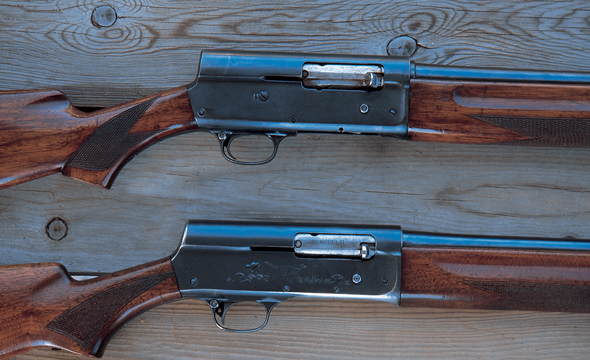
It was a sad day in 1999 when Browning announced it was discontinuing the Auto-5 humpback. There wasn’t a dry eye in the house — at least not my house.
My first experience with the Auto-5 came in 1996 at the hands of Lonnie Ray, my father-in-law. He had invited me to go duck hunting the day after Thanksgiving as soon as the turkey wore off. As dawn broke, I crouched in a duck blind on the edge of a flooded cornfield in Porter County, Ind. I hadn’t brought a gun with me during my holiday visit, so Lonnie lent me his Belgian Auto-5 Magnum.
I had seen many humpbacks through the years but had never fired one. When a lone drake mallard skittered over the paper-thin ice, I painted a stripe through him and touched ’er off. My life would never be the same.
Neither would my shoulder. As the duck crumpled, that old humpback slammed into me like an Erie-Lackawanna freighter on its 4:19 Toledo run. Beaming, Lonnie said, “That old Browning really hammers the ducks, doesn’t it?”
“Uh huh,” I gasped. “But how do you get them to shoot it?”
The Classic Design
Ah, the art and mystery of the Browning humpback. It’s been gone for six years, and every day and in every way, its square, uncompromising profile looks better. For 96 years, it remained in production — longer than any other model of shotgun. John Wayne used a humpback. So did John Dillinger. Its fame was such that even current Browning shotguns such as the Gold Classic High Grade are still described in company catalogs as “beautiful semi-humpbacks.” It was one of the greatest sporting firearms of all time.
Introduced in 1903, the original Auto-5 was a marvel for its day. It embodied the first practical application of the long-recoil principle in a sporting firearm. Nowadays, the idea of a shotgun with a barrel that blows backward to eject the empty hull, cock the hammer and chamber a fresh shell seems laughably primitive. But in 1903, it was a daisy.
Not only was the Auto-5 the first successful autoloading shotgun, it was also the most flexible autoloader of its day. Today’s gas-operated rifles and shotguns gobble up anything you stuff in them, from light target loads to magnums. During the first few decades of the 20th century, however, that was different. In those days, autoloading pistols and rifles operated reliably only with one specific bullet weight and powder charge. Light loads wouldn’t cycle the action, and heavy loads would beat up the gun. The Auto-5 was different.
What made it different was the “friction ring.” This small, reversible ring of steel, beveled inwardly on one face, sits atop the recoil spring and encircles the magazine tube. With its beveled face pointing toward the magazine cap, the friction ring forces a springy collet called the “friction piece” to constrict around the magazine tube when the gun is fired, putting the brakes on the backward motion of the barrel during recoil. This is helpful if you are shooting heavy loads. With the friction ring reversed so its flat face points toward the magazine, the friction piece cannot constrict. That lets off the brakes and lets light loads cycle the action.
To switch from light loads to heavy loads or vice versa, you could remove the barrel, reverse the friction ring and replace the barrel. The problem arises when the friction ring is set in the wrong direction. Shooting a light load with the ring in the heavy-load position will typically produce a jam. Conversely, shooting a heavy load with the ring in the light-load position will typically belt the holy hell out of you, as I discovered in that Indiana duck blind. My teeth still hurt.
Many Other Features
In its day, the five-shot Auto-5 was all you needed for bobwhites to bears. Unlike its competitors, the Auto-5 incorporated a magazine cutoff, a small T-shaped lever protruding from the lower left side of the receiver. Flipping this lever let you feed one round directly into the chamber without having to unload the magazine. If you were pounding the cornfields for pheasants and kicked up an 8-point buck, you could flip the cutoff lever, open the action to eject your No. 6 load, slip in a slug, and say goodbye to Mr. Buck. At least that was the theory.
The Auto-5 also introduced American shooters to the idea of an operating handle. For the benefit of those, including me, who incorrectly call it “that finger thing,” the operating handle is the small cocking piece you pull to charge a semiauto shotgun. Today, every semiauto has an operating handle. It seems like the most natural concept in the world, doesn’t it? However, the Auto-5 was the first sporting gun to feature an operating handle. Other semiautos of the day used plungers, toggle-joints and who knows what else as cocking pieces.
Foolproof reliability made the Auto-5 successful. Its natural-pointing characteristics made it beloved, though. Some shooters, such as my friend Jim Schlender, can pick up any shotgun and bust birds with it. Some of us, however, have a tough time finding shotguns that fit. For those so handicapped, an Auto-5 does what no other shotgun does: It points. That Gibraltar-like receiver rising before our eyes gives us a thrill no other shotgun can.
I am a good example. During a recent trap outing at the magnificent Iola, Wis., Conservation Club, I missed 10 straight with Jim’s Winchester 101, as fine a shotgun as I’m ever likely to hold. In frustration, I dug my 1939 Auto-5 out of my trunk. (I bought this grand old gun years ago in South Bend, Ind., home of the Fighting Irish, so I call it “the Humpback of Notre Dame.”) Sure enough, the birds began breaking — not all of them, but enough to make me smile.
History and Imitation
By all rights, the Auto-5 should have been made by Winchester. After all, John Browning designed much of the gun under Winchester’s roof in New Haven, Conn. But Winchester’s refusal to pay Browning royalties for the design precipitated a notorious falling-out between the parties, so Browning left Winchester with his Auto-5 design under his arm. He ended up at Fabrique Nationale in Belgium. FN began manufacturing the gun in 1903, but it wasn’t officially imported into the United States until 1923. However, many examples apparently made it across the Atlantic soon after the gun was introduced.
Thus, the first Browning-designed humpback officially sold in the United States wasn’t the Browning Auto-5. It was the Remington Model 11, a near-knockoff of the Auto-5 that was produced under license from Browning from 1911 to 1948. In 1930, another officially licensed Auto-5 clone appeared: the Savage Model 720. Finally, in the 1970s, two other Auto-5 clones were rolled out: the Auto Pointer, made by the Yamamoto Co. of Tokyo, and the Herter's SL-18, made by The Pine Co., also of Japan.
It’s confession time. In terms of shooting qualities, I cannot tell any difference between a Belgian Auto-5, a Japanese Auto-5, a Remington 11, a Savage clone or an Auto Pointer. I’ve shot them all, and they all do well for me. We will pause a moment while Browning collectors gnash their teeth and rend their garments. Sorry! The cachet of the “Belgium Browning” has always seemed more imaginary than factual to me. In fact, the best-shooting humpback I’ve fired was a Savage 745, the alloy-receiver variant of the Model 720. The Belgian guns are superb, of course, but the beauty of an Auto-5 is in its design, not the maker’s name engraved or roll-stamped on it. Purists sniff and snort about “Japanese Brownings” and barely acknowledge the existence of the Remingtons, the Savages or, God forbid, the Auto Pointers. Shame on them.
Cataloging the Imitations
If imitation is the sincerest form of flattery, the Auto-5 has certainly been flattered. There are enough flavors of humpbacks to confuse the casual shooter.
These humpbacks are not true clones. If they were, all parts would interchange. They don’t. Really, 100 percent parts interchangeability among humpback variants is a problem. Some parts, such as recoil springs, interchange between guns of the same gauge. Others, such as safeties and magazine cutoffs, don’t. Other parts, such as forearms and metric-thread screws, interchange on paper but not in real life. Other parts, such as buttplates and barrel extensions, don’t interchange but can be fitted. Some can’t, no matter how much bad language you use. I’ve found parts interchangeability among humpbacks seems to have two or three rules and 5,000 exceptions.
The forends on humpbacks tend to split, and the old hard-rubber buttplates get brittle or shrink with age. Although the design is sturdy, replacement parts are occasionally necessary. If you’re trying to rehabilitate your humpback, the good news is that most critical components — barrels, forearms and buttstocks — are available as newly made or NOS (new old stock) parts. Gun Parts Corp. sells enough parts to repair almost any humpback, and even major catalog houses such as Cabela’s sell wood and aftermarket barrels. A 10-minute Internet search will find enough humpback parts to build one from scratch.
Conclusion
Browning’s Web site (www.browning.com), one of the finest in the shooting industry, includes a historical timeline. In the entry for 1998, these two touching sentences appear: “The famous Auto-5 shotgun, invented in 1903, and one of John M. Browning’s greatest inventions, lives out its life. Amid much concern and thought, it is discontinued from the line.”
Sigh.
Although I realize that modern Browning shotguns, such as the Gold Series, are fine guns, I’ll always leave room in my gun rack for at least one Auto-5 or a humpback clone.
But come to think of it, Browning had it wrong. The Auto-5 never “lived out its life.” There are still hundreds of thousands of humpbacks out there. Every year, I see them in Michigan’s aspen thickets, in Indiana’s cornrows and on Wisconsin’s granite hillsides.
“Lived out its life?” Say what? Everybody knows that humpbacks live forever.
This article appeared in the November 5, 2004 issue of Gun List (now Gun Digest the Magazine).
New HK45C Storms Through Best Ranger Competition

Take a new pistol out of its box and subject it to field conditions in the hands of some of the toughest, most dedicated men in the U.S. Army and it will either fail the test or pass on its own merits.
Otherwise nearly identical in features to the full-size HK45, Heckler & Koch has introduced the new HK45-C Compact with a slim-line grip profile. It could be just another pistol, but H&K has such faith in its performance and durability that it donated new guns to the Army for its 2011 Best Ranger Competition April 15-17 at Fort Benning, Georgia.
 The competition consists of enough physical and mental tasks to make a fighter in the octagon beg for mercy. Over the three days the Army intentionally provides very little rest or nourishment. Historically 60 percent of the two-man teams drop out due to injury, dehydration or exhaustion.
The competition consists of enough physical and mental tasks to make a fighter in the octagon beg for mercy. Over the three days the Army intentionally provides very little rest or nourishment. Historically 60 percent of the two-man teams drop out due to injury, dehydration or exhaustion.
This event tests both men and their gear.
Day two of the Best Ranger Competition features an endurance event that is billed simply as “Day Ranger Stakes.” Upon command a team begins a series of competitive challenges while fully outfitted including helmet and protective vest: firing the M4, hauling 200-pound skeds over obstacles and through culverts, firing combat shotguns off-hand and firing pistols from prone positions through a small ground-level slot. Is the pistol up to it?
The Pistol
The HK-45 Compact, chambered for .45ACP, has numerous features that will interest tactical operators, law enforcement officers and even competition shooters. Here’s how it stacks up compared to the HK45 from which it is derived:
Barrels for the Compact are made in a cold-hammer forging process giving rise to steel with improved strength which means it holds its straightness tolerances even under stressed conditions. The
HK45 series also uses a proprietary HK O-ring barrel for precise barrel-to-slide lockup and repeatable accuracy.
HK’s unique internal mechanical recoil reduction system reduces the force of recoil.
H&K spec sheets note that anticipated service life for the HK45-C is 20,000 rounds, which should be more than enough for any training, deployment or home-defense situation.
Both the HK45 Compact and full-size HK45 use an improved USP-style control lever, a combination safety and de-cocking lever. The lever is frame-mounted and is quickly accessible; it has a positive stop and returns to the “fire” position after de-cocking.
Back at the contest…
The HK-45C did all that was asked of it by competitors in the Best Ranger Contest. The pistol was dunked in the water, abused in the heat and mud, fired from various positions at typical combat pistol distances and came through without a hitch.
Officially, the Rangers were barred from evaluating any supplied products during or after the competition, but several competitors noted that they were enthusiastic about the comfortable feel and ease of target acquisition with new HK-45C.
Suggested retail price is $1,147 for the DA/SA model with control lever and $1,237 for the LEM enhanced DAO model without control lever. Heckler & Koch is currently building the HK45C at HK’s new American manufacturing facility in Newington, New Hampshire.
From Crime to Critters: Michigan Concealed Carry Surging in Popularity
 A decade ago, Michigan became a “shall issue” state for concealed carry permits, meaning officials had to award a permit to anyone meeting standard qualifications. That permitting change has been embraced by Michigan citizens.
A decade ago, Michigan became a “shall issue” state for concealed carry permits, meaning officials had to award a permit to anyone meeting standard qualifications. That permitting change has been embraced by Michigan citizens.
As the Jackson Citizen-Patriot reported, “Statewide, one in 26 eligible-age adults has a license to carry. There are more than 270,000 permit holders, double the amount five years ago … Phil Sheridan Sr. of Sheridan Arms sees all walks of life applying for CCWs in his Saginaw Township gun shop and training center.”
“From young to old, male to female, single to married,” Sheridan said. “I’ve had people in wheelchairs that I’ve trained … after all, they still have the right to defend themselves.”
Many Michiganders cite crime as the main reason for their permit. “You’re out here in rough neighborhoods,” said Tishumbe Franklin, 37, who owns a private security company in Flint and recently had his carry permit approved.
But the most surprising reason for concealed carry here? Wildlife.
“About half that called me [for carry classes] are worried about wolves, wolves that will kill their dogs,” said Paul Ewing, who teaches a pistol safety course in the Upper Peninsula. “That’s the number one reason I hear. It’s not so much about crime.”
“In Keweenaw County, where nearly one in 10 adults has a concealed pistol license, most people carry their handguns for hunting, County Clerk Julie Carlson said.”
“It’s not for protection from people,” Carlson said. “It’s protection from animals.”
Source: Jackson Citizen Patriot
Recommended gun books for those who carry concealed handguns:
New! Concealed Carry Bundle – Save 50%!
The Gun Digest Book of Concealed Carry
The Gun Digest Book of Combat Handgunnery
Effective Handgun Defense, A Comprehensive Guide to Concealed Carry
Find more resources at gundigeststore.com/tactical

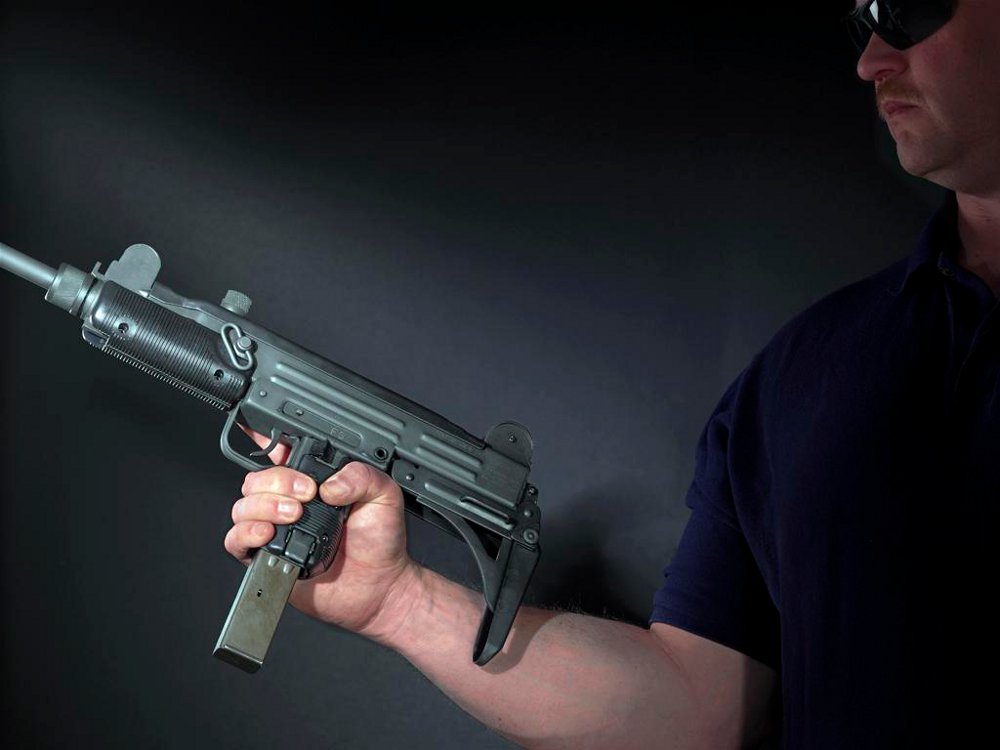

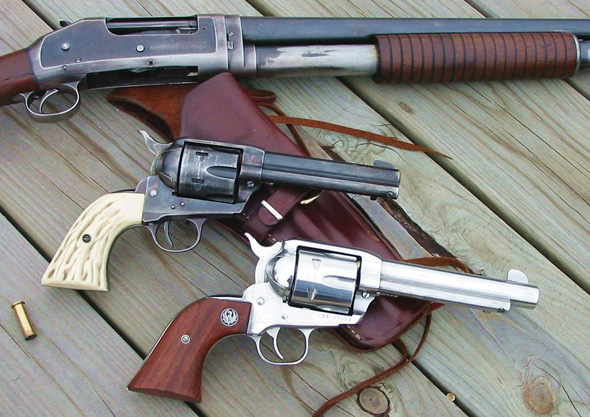
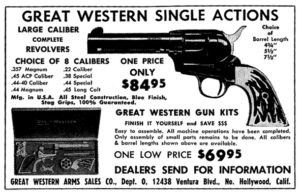

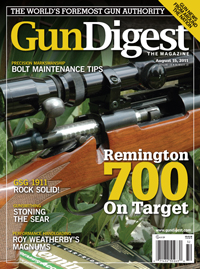

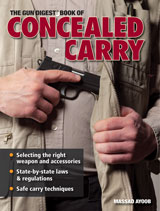
![Best Concealed Carry Guns In 2025 [Field Tested] Wilson Combat EDC X9S 1](https://gundigest.com/wp-content/uploads/Wilson-Combat-EDC-X9S-1-324x160.jpg)


![Best 9mm Carbine: Affordable PCCs [Tested] Ruger Carbine Shooting](https://gundigest.com/wp-content/uploads/Ruger-Carbine-Shooting-100x70.jpg)
![Best AR-15: Top Options Available Today [Field Tested] Harrington and Richardson PSA XM177E2 feature](https://gundigest.com/wp-content/uploads/Harrington-and-Richardson-PSA-XM177E2-feature-100x70.jpg)
